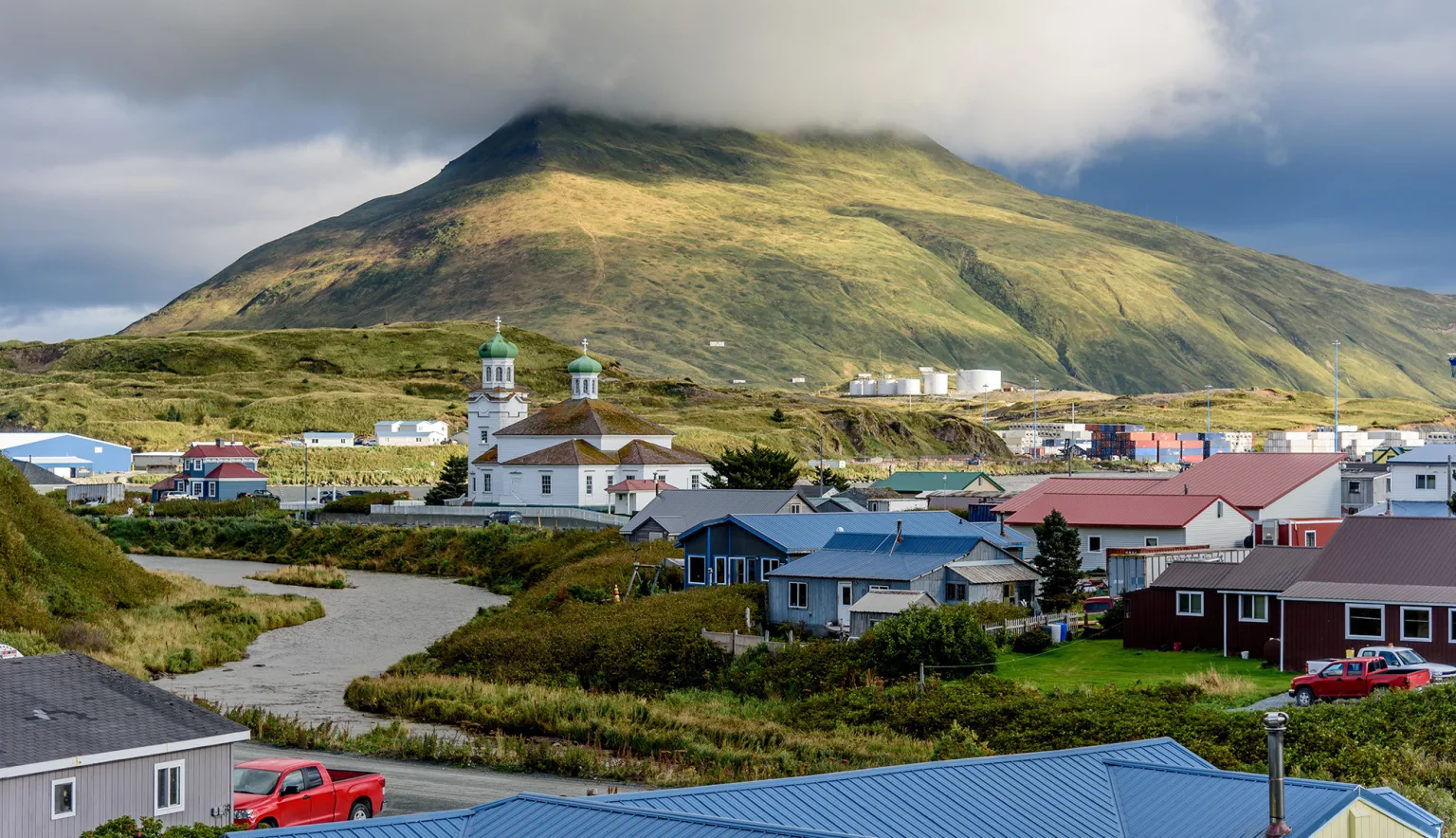Separating the peaceful Pacific Ocean and the choppy waters of the Bering Sea is the Aleutian archipelago where Unalaska Island is positioned. Its rugged coastline is a diverse and dynamic environment of seascapes accompanied by vivid, swirling skies that project the Aurora Borealis.
AN ALEUTIAN ADVENTURE
Unalaska belongs to the Fox Islands group off the US state of Alaska; the name is a misnomer as the island closely resembles the state with regards to the wildlife, landscape, and climate.
The terrain is mountainous with short, cold, and windy summers which give way to long and snowy winters. It has a subpolar oceanic climate, close to an Arctic tundra, however, the 90 inches of snow that the island regularly receives dissipates quickly due to the relatively warm winter temperatures.
Geographically speaking, it is quite far removed from Alaska, otherwise known as the Land of the Midnight Sun. A three-hour flight from the Alaskan capital of Anchorage, Unalaska is located in a segment of the Ring of Fire, an active volcano zone with volatile tectonic plates.
The indigenous Paleo-Aleuts tribe arrived on the Aleutian Islands 10,000 years ago, with Russian fur traders establishing themselves there in the 1700s. The identity of the Unangan people, as they are also known, closely resembles the Inuit culture and language. The island community has a rich history, including the Church of Holy Ascension, which is evidence of the influence that Russian settlers had over religion in the area. It now has a population of 4,230 and is famous for its commercial fishing port, Dutch Harbor, which is also ripe for berry picking and kayaking.
Islanders are not the only inhabitants, as land mammals, marine life, and rare and unique bird species account for the abundant wildlife and ecosystems on the chain. In winter, emperor geese may be seen around the bays; it is also worth looking out for tufted and horned puffins, and brown bears are occasional visitors who like to swim between the island and the mainland.
In the semi-arid tundra environment, the Sitka Spruce Plantation, with its fresh green needles and crinkled cones, is an unlikely but welcome sight on the treeless landscape and the oldest afforestation project in North America. The usual Aleutian vista is comprised of snow-capped, sky-piercing mountains and steaming volcano tops, sweeping down to the coastal views of the deep blue waters surrounding Unalaska Island.
Potential visitors should note that the prime time for visibility of the Northern Lights is between the months of August and April, the hours of darkness and lack of light pollution spell peak viewing conditions for solar activity.
The intense glowing colours are an awe-inspiring sight as they dance across the Alaskan skies.





















